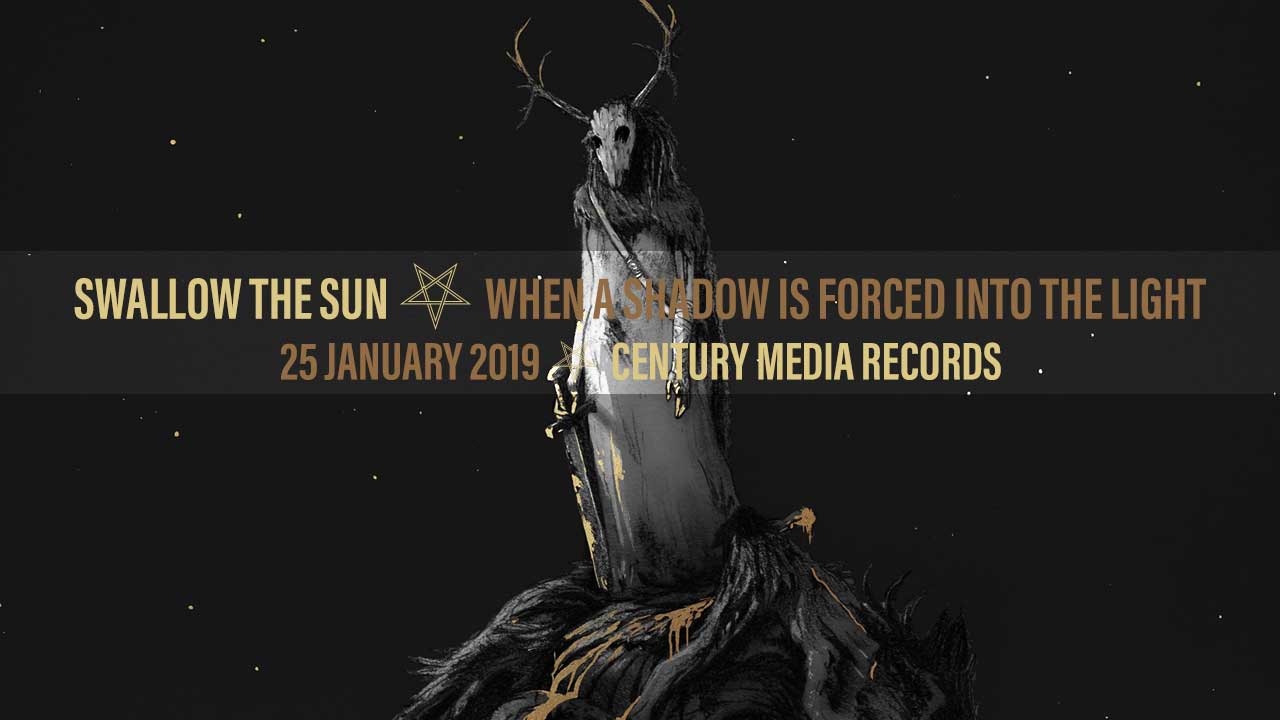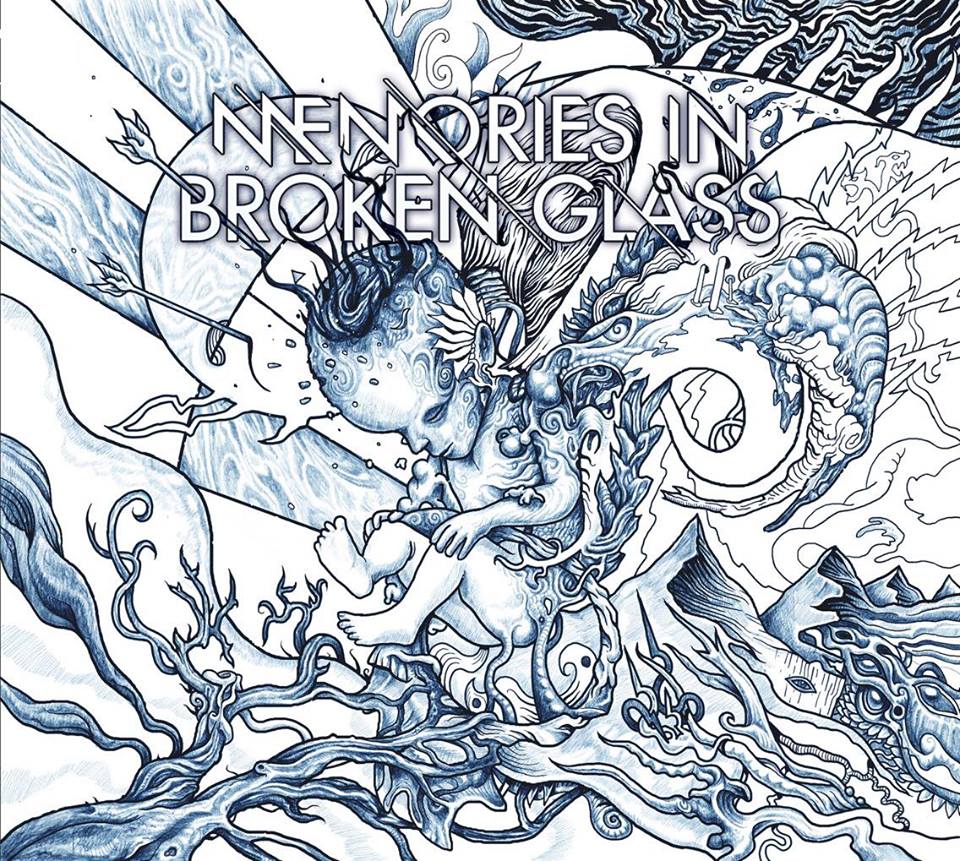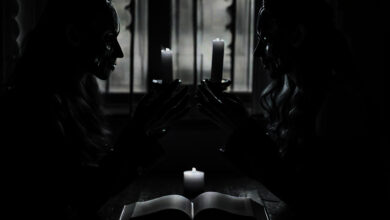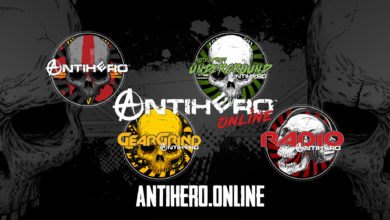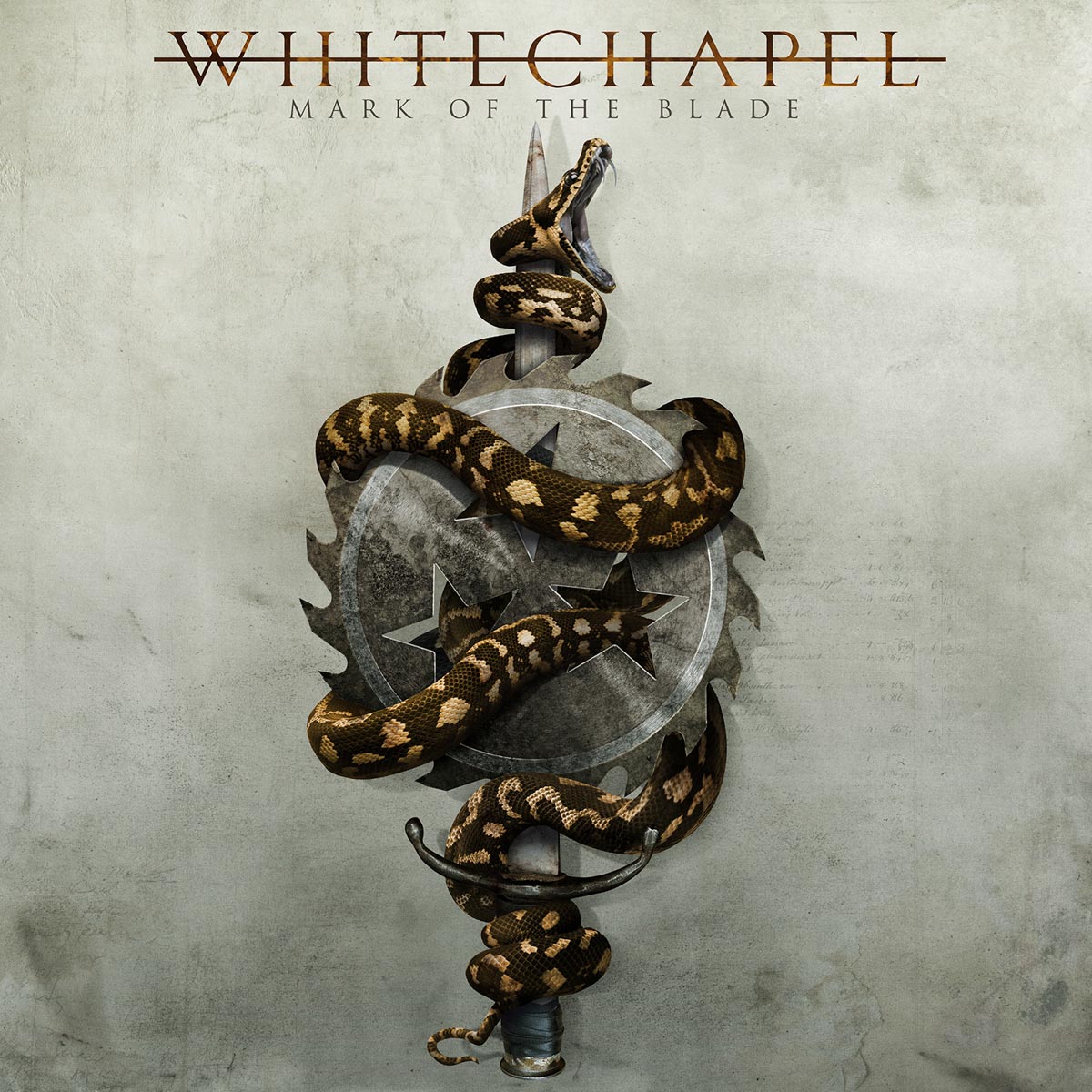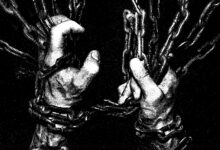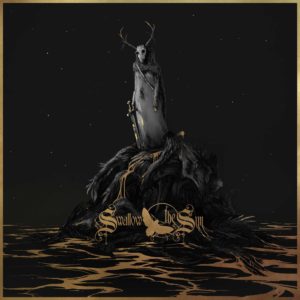 First, I’m going to come clean and say that I came into this review as a non-fan of the band. Before sending hate mail, let me explain. Often, I will hear a snippet of a band, maybe just a minute or two, and for whatever reason (usually depending on my mood), it just doesn’t hit me the right way and I file the band away as not appealing. Admittedly, it is a flaw in my personality. For some perspective, this happened when I first heard a bit of Sepultura’s Chaos A.D., Incantation’s Onward to Golgotha, and even the first Strapping Young Lad record (now one of my all-time favorite bands) back in the day. Luckily, I revisited those albums later on and realized how wrong I was. Yes, I was wrong about Swallow the Sun. Theirs is a sound that actually dwells in a favorite nook and cranny of mine shared now with bands like Type O Negative, Amorphis, and My Dying Bride. This Finnish band formed in 2000 and When a Shadow is Forced into the Light is their seventh full-length scheduled to be released on January 25, 2019.
First, I’m going to come clean and say that I came into this review as a non-fan of the band. Before sending hate mail, let me explain. Often, I will hear a snippet of a band, maybe just a minute or two, and for whatever reason (usually depending on my mood), it just doesn’t hit me the right way and I file the band away as not appealing. Admittedly, it is a flaw in my personality. For some perspective, this happened when I first heard a bit of Sepultura’s Chaos A.D., Incantation’s Onward to Golgotha, and even the first Strapping Young Lad record (now one of my all-time favorite bands) back in the day. Luckily, I revisited those albums later on and realized how wrong I was. Yes, I was wrong about Swallow the Sun. Theirs is a sound that actually dwells in a favorite nook and cranny of mine shared now with bands like Type O Negative, Amorphis, and My Dying Bride. This Finnish band formed in 2000 and When a Shadow is Forced into the Light is their seventh full-length scheduled to be released on January 25, 2019.
Rarely does an album begin and immediately suck the listener in. Swallow the Sun does just that with the title track commanding one’s full attention. A wide, expansive sound reinforced with multiple layers of guitars helps to create the ethereal mood. There seems to be an intriguing use of contrasting elements as well with acoustic guitars alongside distorted ones and the juxtaposition of clean male and female vocals with chilling, howling screams. As heavy as their creation is, there is a deliberate focus on maintaining melodic consistency. Key changes along with the different instrumentation help to keep things interesting.
The third track, “Firelights,” is a more mellow song that nonetheless mesmerizes with another shade of Swallow the Sun. The clean guitar, bathed in chorus and delay, presents an entrancing melody that truly opens up when the chorus hits. Again, male and female clean vocals intertwine to haunt the listener. Toward the middle, they launch into some intense double bass and harsh, gruff vocals that serve as a poignant addition to the realization of the song’s integral idea. Honestly, hearing this style takes me back twenty-plus years ago as does the rest of the album, but this track, in particular, summoned a pleasant memory of listening to one of my favorite albums, Alternative 4 by Anathema. Clearly, these musicians and I have parallel listening preferences/tastes.
In “stone Wings,” the fifth track, the harmony of two guitars, one playing a higher part and the other with a lower section affected by eerie tremolo, begin the song. Soon, another guitar joins the mix adding to the fullness of the melody created. The melody itself is drowned in sorrow, like tears falling from the eyes of angels to become pools of crimson on a vacant cathedral floor (Note: I wrote this prior to discovering the song “…and Heaven Cried Blood” from 2009’s New Moon). Hearing the male and female vocals together as such, blended perfectly, conjures what I’d envisioned as the future direction of Lacuna Coil before they exploded. Toward the latter half of the song, Mikko Kotamäki launches into some deep, lung-scraping vocals as if to remind us all that Swallow the Sun is still very much a Death/Doom band. Stringed instruments, possibly/probably created by keyboards but convincing regardless, help shape the ending of the song with a mammoth-sized orchestral feel capable of filling the largest of classic Romantic-era European opera halls.
“Here on the Black Earth,” the seventh track is yet again another song that transports the listener to infinite realms of imagination conjured from deep within the ether. From 3:32 to 3:51 is a section that truly exposes the latent talent at use. During those twenty seconds, there is a break of sorts with echoing clean guitar chords and strings which presents a new opportune land altogether. Infectiously, the band summons the psychedelia perpetuated by the Beatles when they were expanding their consciousness and music with songs like “Tomorrow Never Knows”. The vocals have a watery sounding delay as the guitars play some of the most sorrowful, somber melodic lines of the album. Hooks like these elevate the band to an entirely new level, a territory they discovered, settled, and expanded themselves.
There are numerous proprietary, advantageous traits that aid the band in attaining their honest, spiritually epic sound. These include the instrumentation/expert songwriting, the guitar-work specifically, and the vocals. These and other myriad elements contribute to the over-arching idea of a shadow forced into light, discovery, and ultimately, catharsis. Instrumentally, the band’s nineteen-year history shines brightly. The rhythm section is tightly locked in providing ample room for larger ideas to be presented by the guitars, vocals, and various instruments performed through the keyboards. In the songwriting itself, Swallow the Sun manage to successfully pull off the tight rope walk of presenting new creative ideas while still managing to keep their music engaging. Simply put, they stay true to their sound while exploring other ideas without alienating their core fans.
The guitar performance as contributed to by Juha Raivio and Juho Räihä, showcases intelligent playing and inventive arrangement. The clean tones specifically are exceptional as they are crystal clear and bright without becoming tinny sounding. That is not to say that the distorted tones are subpar because they are massive and comparable to those of other similar bands like Paradise Lost and older Katatonia. There are but a few solos on the album, but evidently this is due to the band’s preference of quality and adherence to their own set standard of what is deemed necessary to the successful completion of the song. Think David Gilmour rather than Steve Vai.
The vocals are the band’s game changer. Clean vocals can be extremely polarizing as there is a fine line between moody and whiny, sorrowful and over-indulgent, and on and on. Mikko has a full, rounded-out voice steeped with emotion that invites the listener to join in as an active participant. Extreme vocals are used wisely to put a particularly dark or even fierce emphasis on specific sections. Also, female vocals work synergistically with the other’s creating a larger soundscape overall as if the borders were musically expanded exponentially.
I’m glad to have given Swallow the Sun another much-deserved chance. They are now helping to fill a void left vacant by Anathema’s new ventures, the dissolution of Theatre of Tragedy, and the four-year absence of My Dying Bride. In an ideal world, this is what would be in regular rotation on Rock radio. A plethora of potential listeners would truly be attracted to Swallow the Sun’s smart, escapist music. The year is young, but already this is an album that will surely remain among my favorites throughout. In the meantime, I’m having a blast on a deep dive into the band’s extensive back catalog which I highly recommend as well.

